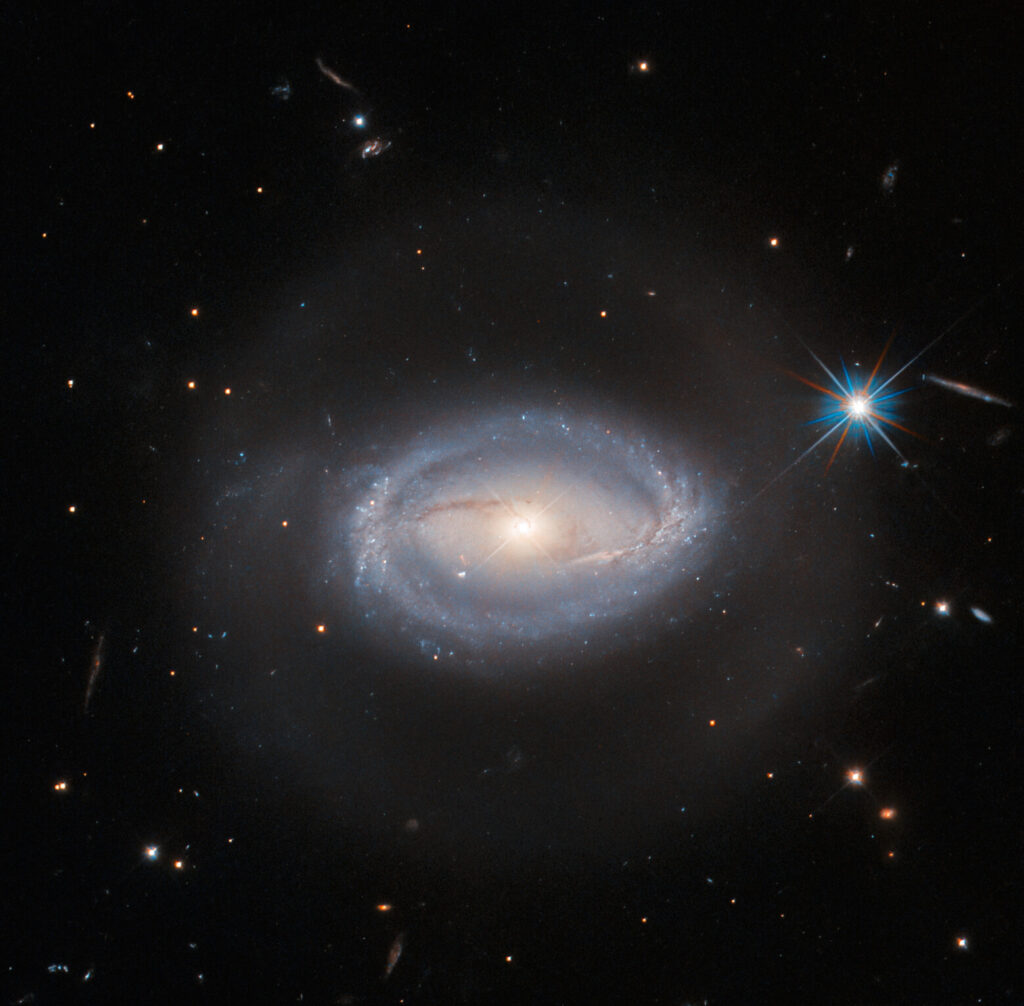The Hubble mission support team has published a new image of the space telescope. This time it captured the galaxy Z 229-15.

Galaxy Z 229-15 is located at a distance of 390 million light-years from Earth in the direction of the constellation Lyra. It has a well-defined spiral structure. The image also shows a ring located on the outskirts of the galaxy, consisting of many stars and a dim halo surrounding it.
Z 229-15 is an example of how the same object can be classified differently in astronomy. At its center is a core containing a supermassive black hole. Currently, it actively absorbs the matter. However, it must be understood that matter does not fall directly on it. It forms a disk around it, consisting of incandescent gas, which is a powerful source of radiation. That’s why the core of Z 229-15 in the Hubble image is so bright.
Due to this feature, Z 229-15 is classified as a galaxy with an active core. At the same time, we can pay attention to the fact that despite the brightness of the core, we can also see the rest of the structure of Z 229-15. Therefore, it is simultaneously classified as a Seyfert galaxy. And finally, with some stretch, Z 229-15 can also be called a quasar. This term is used to refer to the galaxies with active black holes, which accretion disk is a source of extremely powerful radiation. Due to this circumstance, quasars are also called beacons of the Universe.
You can also read about how the Hubble telescope photographed the galaxy with “tentacles”.
According to https://esahubble.org
Follow us on Twitter to get the most interesting space news in time
https://twitter.com/ust_magazine

